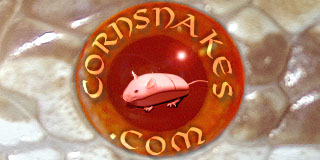For a royal python - even a baby - fourteen days is literally nothing.
A gerbil is likely to be too big if she's eating rat pups and/or small mice.
This is what I've done when I have had a baby royal who's refused two feeds in a row:
1. If you are handling "for fun" stop doing this until she starts feeding again. Her eating is more important than you playing with her. Handle her only to clean out her cage and to weigh her.
2. Get a good set of digital scales (ideally ones that weigh in grams up to 5kg - that'll last you her whole life) - you can usually get 'em cheap at places like Wilkinsons, Tesco or Lidl, and some pound shops. Weigh her once every two weeks and keep a chart of those weights. If she loses more than ten percent of her body weight from the first weighing, then you may have a problem.
3. Don't try to feed too often - try on the weeks you aren't weighing her (every other week).
4. Try a defrosted rat pup that's been thawed dry (put the rat on a paper towel to thaw out during the day) and then dip JUST the head into very hot water (not boiling hot, but hot from the tap). This preserves as much of the "food" smell as possible.
5. Don't panic. Royals do this sort of thing, and it drives their owners bonkers, but the key is that she'll eat when she wants to. The trick is learning to feed when she wants to eat.
6. Watch how she behaves. If she peeks out from under a hide while you're in the room, it's possible she's hungry and is waiting for her dinner; if she stays hidden she's less likely to eat.
7. Some royals strike feed. Some don't. If yours doesn't strike for the rat, put it under her hide with her (your royal DOES have a hide, right?) and leave it overnight. Yes, this might mean you waste a meal.
8. Still not panicking, are you? Please don't feel like you've got to jump straight into live feeding - although it may WORK unless you've got a sympathetic breeder near you you're going to have some difficulty finding a consistent supply of live rodents. I notice you're in the UK - which means you're not going to be able to buy live feeders in pet shops. Before you consider live, though, I'd strongly recommend freshly killed. Looks, smells and feels like live (acts like live if you do the undead mouse dance), eliminates the risk to the snake and eliminates the cruelty to the rodent. Both important things.
9. Sometimes a change of scenery works. If you're housing the snake in a big vivarium, does she have enough hiding places so that she can go from the warm side to the cool side and the water bowl without being seen? If not, add more hides. They don't have to be expensive - cork bark, halves of plastic plant pots or even large plastic plant saucers with a door cut in them. If she's in a small tub, does she have somewhere to hide in there? I use half-plantpots in the tubs too. I have two yearling royals I recently removed from small enclosures because they weren't feeding, put them into three-foot vivariums with lots of hides. Both are now feeding. I also have one adult royal who was in one of the above three-foot vivariums who'd stopped eating; now she's in a large tub in a racking system and is eating again.
10. Check your temperatures and equipment as well - is the basking side temperature correct where your snake actually lays? A thermometer stuck to the wall is about as much use as a chocolate teapot; your royal isn't spending time stuck to the wall... and if you're using a heat mat/UTH, you're not actually measuring the temperature it's getting to; you could be overheating the snake because heat mats do not efficiently heat the air.
I've got more royals at the moment than I can shake a stick at, and I've had to use all of the tricks here and more.

